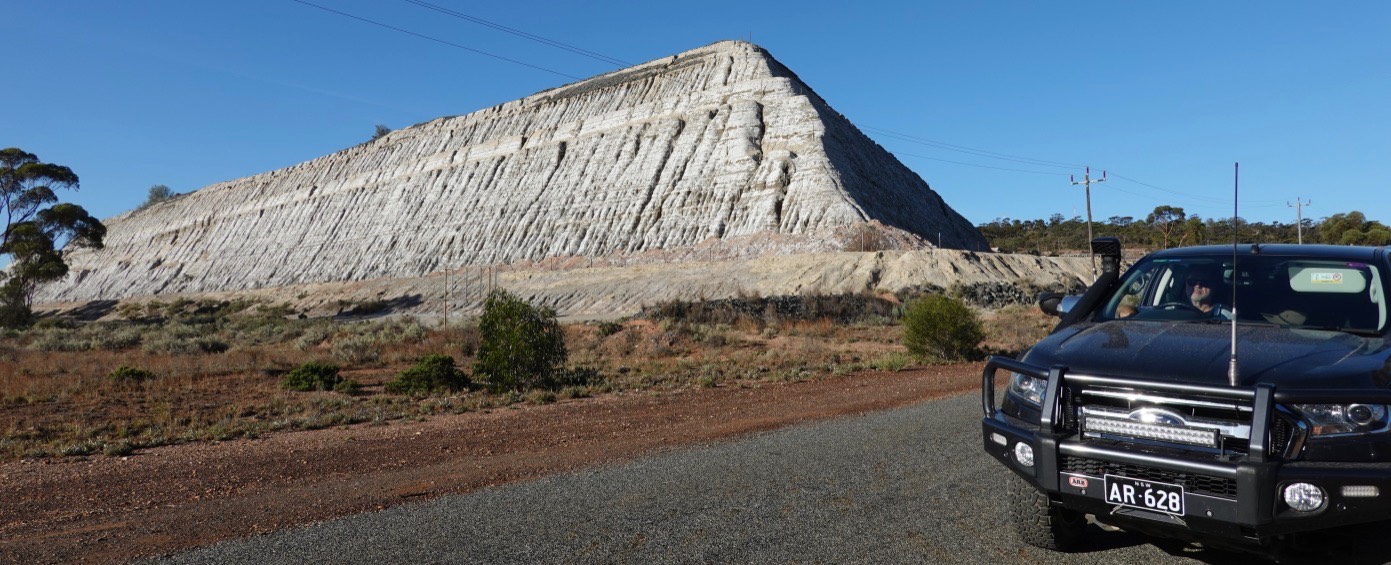 Approaching Norseman from the Nullarbor the road is lined by beautiful golden stemmed trees, so called gimlets and salmon gums, both eucalypts which obtain this amazing coloured trunks and branches after shedding their bark.
Approaching Norseman from the Nullarbor the road is lined by beautiful golden stemmed trees, so called gimlets and salmon gums, both eucalypts which obtain this amazing coloured trunks and branches after shedding their bark.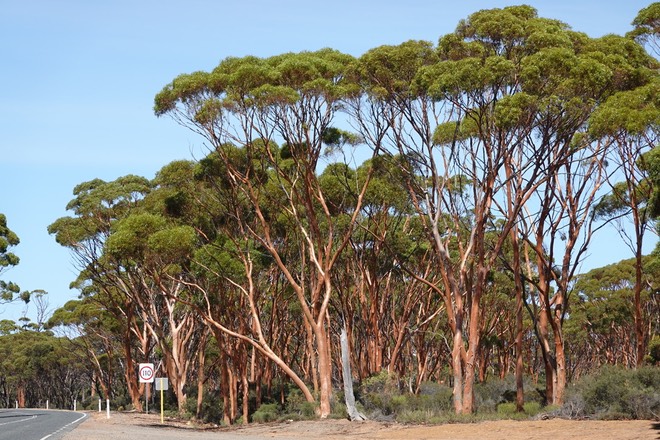
Closer to town we passed Lake Cowan a large salt lake of which there are many to be found between Norseman and Esperance. Depending on the current climate their salt crust is dense or broken down by freshwater flooding. In spite of these changing conditions there are invertebrates and plants which can adapt to either, and when there is influx of freshwater, wading birds return to the wetland.
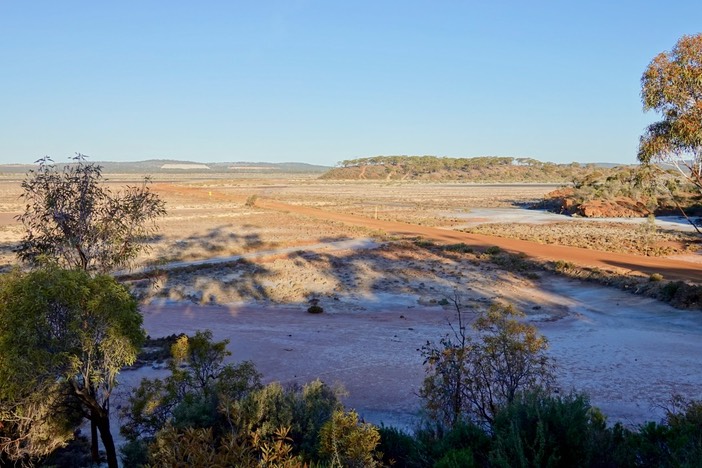
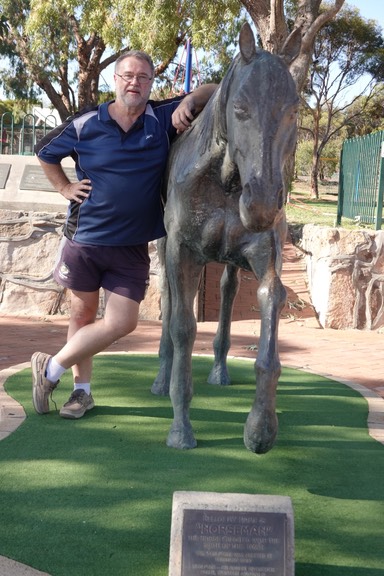
Legend tells that a prospector, named Laurie Sinclair, tied his horse over night to a tree. In the morning next to the horse whose name was “Norseman” was a gold bearing quartz which the horse had unearthed by pawing the soil with his hoof. And that’s how Norseman got its name.
Last time we came through Norseman in 1979 our car was caked in mud from a 350km dirt track. Then there were scouts at the local servo offering car washes. Safe to say, we got our money's worth!
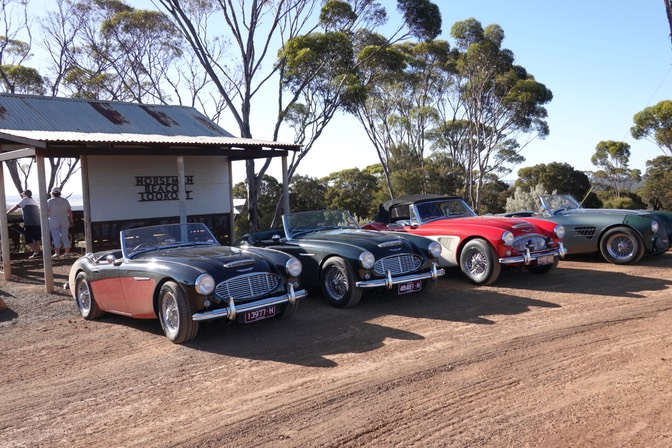
This time there were no scouts in site, as matter of fact, not many people around at all. Some of the local businesses had closed their doors. We learned that the big gold and granite mine in town closed down 2 years ago. Apparently there is still plenty of gold in situ and the town is hoping for a new buyer of the mine. In the meantime small independent miners are still busy finding gold and gems in the area.
There are some nice walks in and around town and from the heights of "Beacon Hill” one has a fantastic, panoramic view. On top of the hill we met a few other “Austins” and their proud owners who were on the way to Perth for a rally.
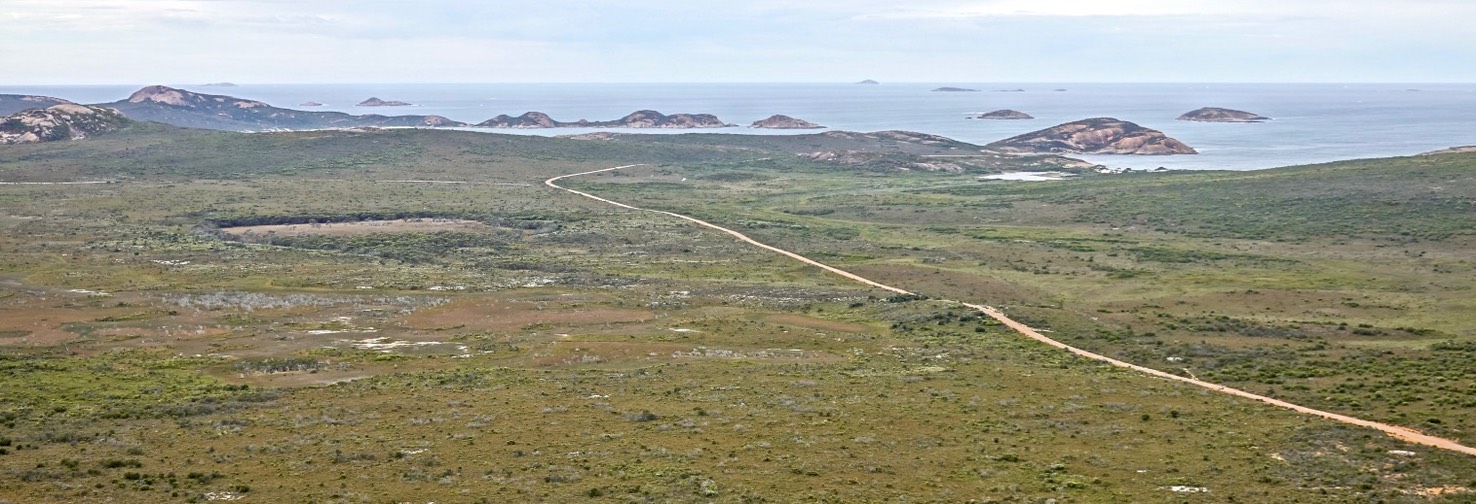 After heading straight west for the last week or so, we changed direction travelling south to Esperance. With a name like Esperance and “Recherche" archipelago I almost felt transported back to France. There is even a French bakery here! Esperance and Recherche were two French ships which in 1792 took shelter behind one of the 110 islands of the archipelago.
After heading straight west for the last week or so, we changed direction travelling south to Esperance. With a name like Esperance and “Recherche" archipelago I almost felt transported back to France. There is even a French bakery here! Esperance and Recherche were two French ships which in 1792 took shelter behind one of the 110 islands of the archipelago.
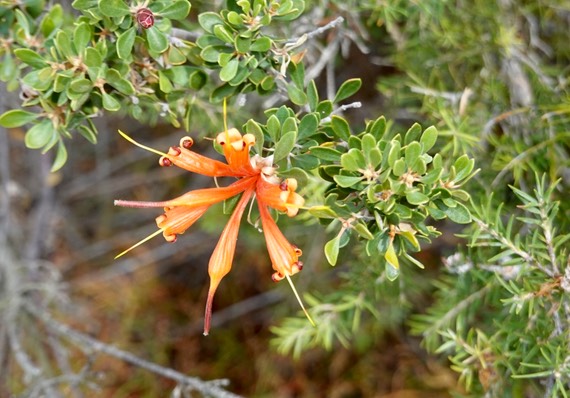 Cape Le Grand is only one of the surrounding national parks in this area. In its midst is the Frenchman Peak a mountain which reminded the explorer Alexander Forrest of the hats worn by French troops in 1800s.
Cape Le Grand is only one of the surrounding national parks in this area. In its midst is the Frenchman Peak a mountain which reminded the explorer Alexander Forrest of the hats worn by French troops in 1800s. 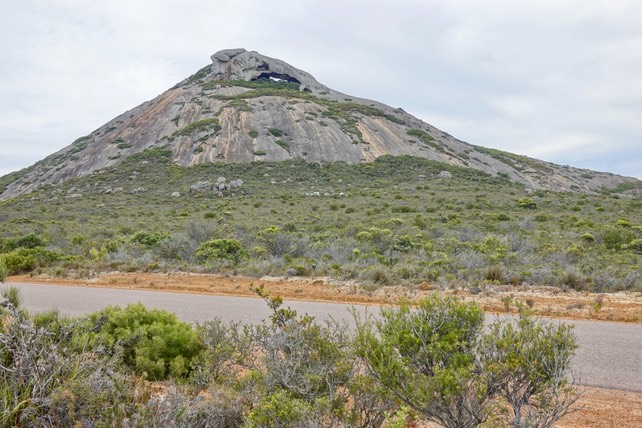 We were silly enough, or maybe lucky enough, to climb almost to the peak. Austin was amazing with his two bad knees - but as you all know he is just 'such a man’! The view from the top was worth risking a bit of cartilage and inflammation for!
We were silly enough, or maybe lucky enough, to climb almost to the peak. Austin was amazing with his two bad knees - but as you all know he is just 'such a man’! The view from the top was worth risking a bit of cartilage and inflammation for! 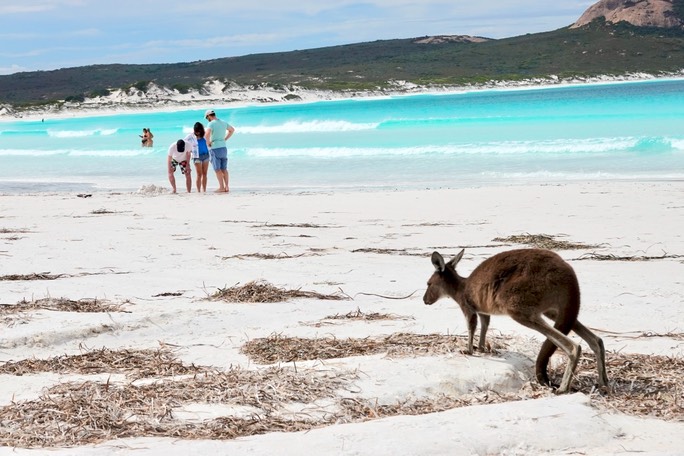
Along the coastline of the national park are some beautiful beaches, the most spectacular one being “Lucky Bay” which is shared by bathers, 4WDs and kangaroos. The sand of the beach is the whitest I have ever seen and the colour of the water pure emerald!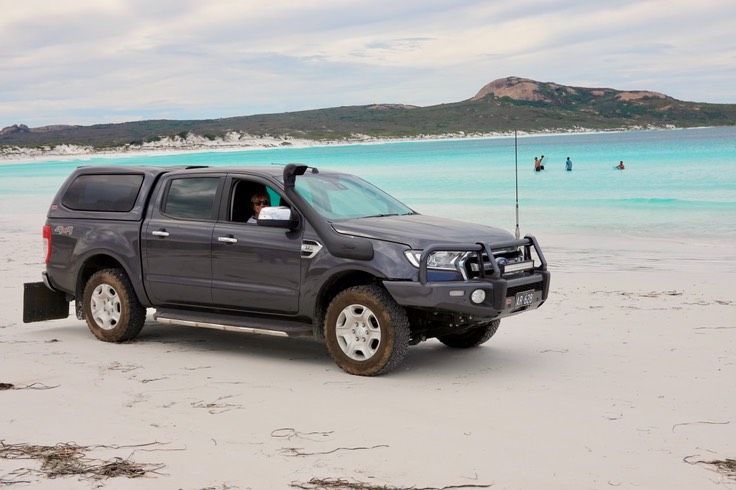
But all of the many beaches around town are beautiful and “The Great Ocean Drive” offers many fantastic lookouts over the bays and islands. Unfortunately rainy weather was closing in and so we decided to slowly move on.
Hold on! I forgot to mention that in spite of the French influence, the English well and truely asserted themselves in this area. 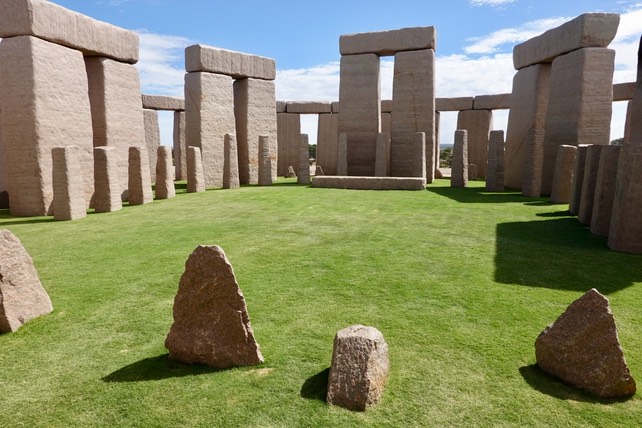
And what could be better proof than this life-size replica of Stone Henge as it would have been in 1950 BC. It has been constructed out of 137 stones of pink granite from a local quarry less than 1km away. To me it looks a little too “Disney” perfect and hasn’t got quite the spiritual ambience like the real thing. Great is though, that it is aligned to catch the sunlight during the winter and summer solstice' dawn and sunrise to beam directly onto the altar.